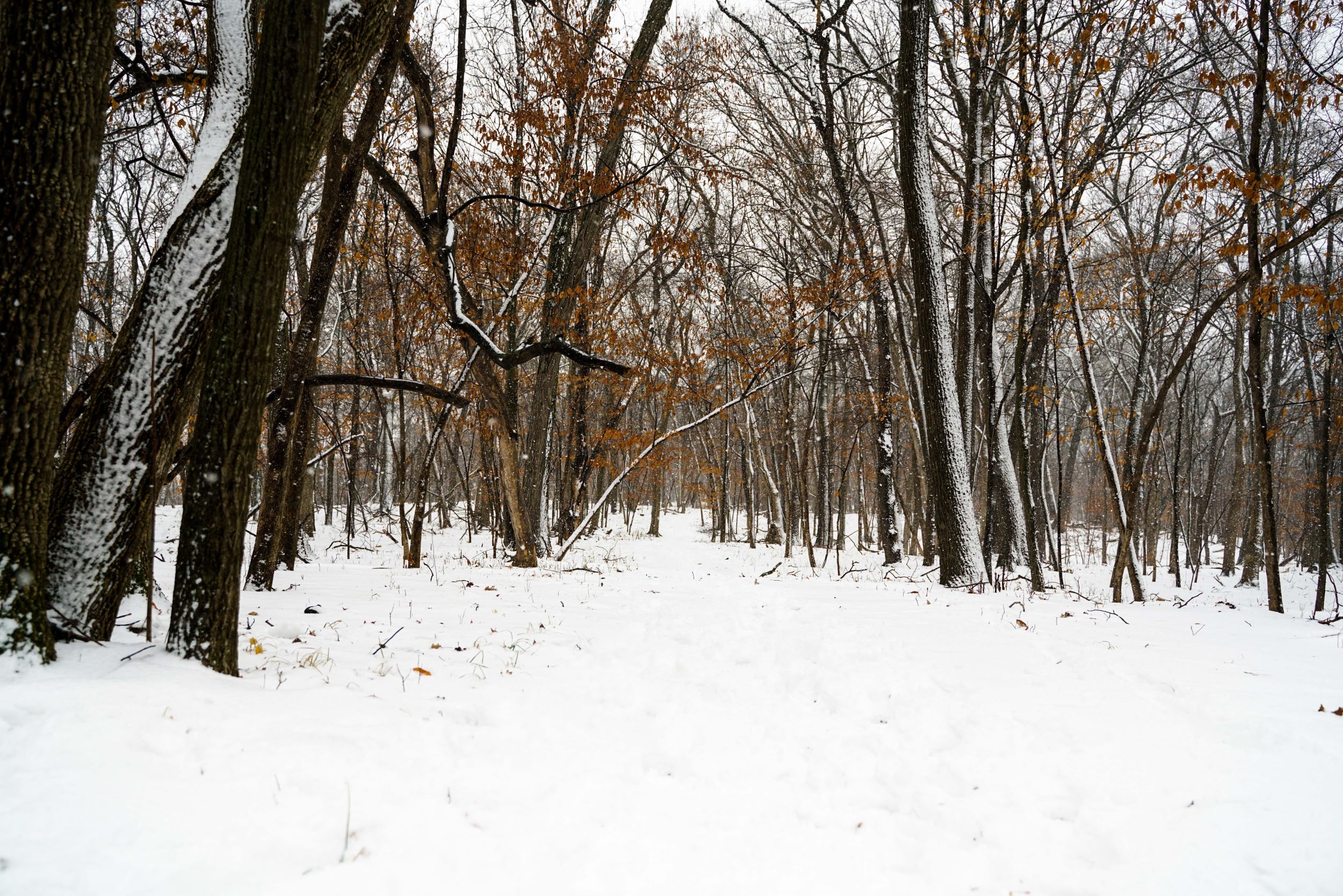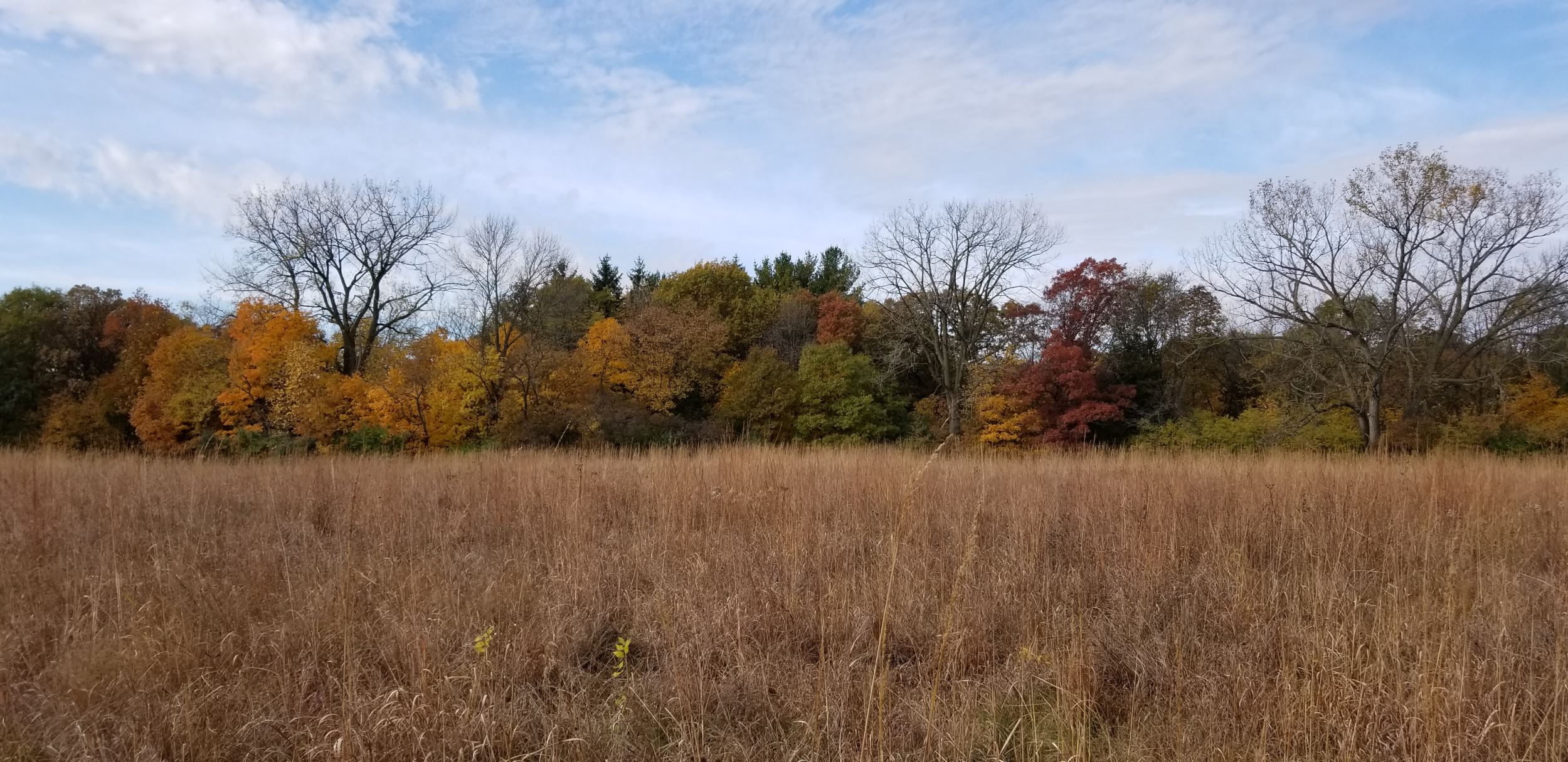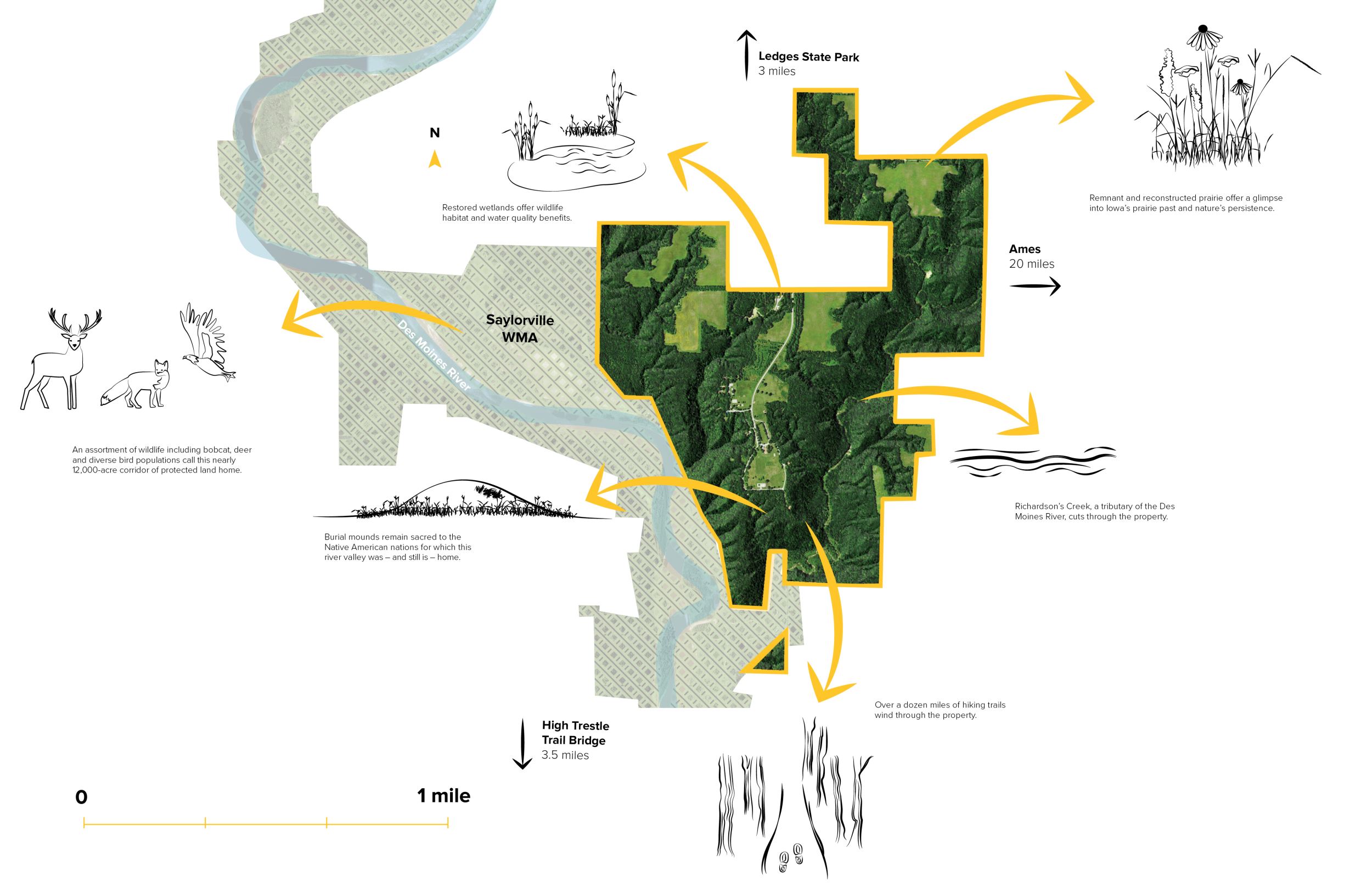A Place to Remember
By Katy Heggen on February 27, 2020 in Blog

Woodland cloaked hills and valleys are awash with native flora and fauna. More than a dozen miles of hiking trails wind past stunning scenic overlooks and sacred spaces. Prairies of native grasses, forbs and wildflowers offer a glimpse into Iowa’s past and nature’s resilience.
This place, the former 4-H camp near Madrid, stretches 1,011 acres along the Des Moines River valley, offering a sense of wildness in the heart of central Iowa unlike any other.
The camp, first known as the Iowa 4-H Center and more recently as Clover Woods Camp and Retreat Center, was split into 12 parcels and offered for sale by the Iowa 4-H Foundation in late September, citing declining attendance and a desire to support other 4-H programs around the state. Many worried about what would become of the natural wonders here and whether the trees keeping watch from the ridgeline would be replaced by towering timbers of another kind.
It was with these outstanding natural features in mind that Iowa Natural Heritage Foundation (INHF) made an offer on the entire camp. The offer was accepted by the Iowa 4-H Foundation, and INHF took possession of the property at the beginning of 2020.
The vision for the former 4-H camp continues to take shape, informed by ongoing discussions with public and private partners and those who know the property intimately.
While the future of this place will differ from its past as its days as a camp come to an end, it will remain a place for wild things, available to those who seek to know nature.
A blank place
Established in 1952, the Iowa 4-H Center was created to offer outdoor education opportunities to 4-H’ers across the state. Ginger Soelberg, who attended the camp in the early 1950s, was among the first campers to explore under the ancient oaks.
“The camp was very new. We slept in tents with wooden floors, ate our meals and did our dishes outdoors,” Soelberg said. “It was not nearly as structured as many camps are now. We had a lot of free time and spent our days hiking and discovering the outdoors.”
The lay of the land has changed significantly since then. Cabins replaced tent platforms,?and meals moved indoors to a central dining hall. Lodges, educational and office spaces rounded out administrative resources. Youth Conservation Corp crews built trails, bridges and constructed scenic overlooks offering new ways to explore.
Over the years, program offerings evolved as well, expanding to include day and overnight opportunities, conferences, workshops, retreats and summer camps open to all. Early on, these expanded offerings responded to opportunities. More recently, they reflected challenges felt at many camps across the country as enrollment in traditional summer camps declined.
Through the years and the changes, nature remained at the heart of the camp’s programs and people’s interactions with this place.
“‘To those devoid of imagination, a blank place on the map is a useless waste; to others, the most valuable part,’” said Jim Pease paraphrasing Aldo Leopold. Pease, a leader in Iowa’s conservation community, taught interpretation at Iowa State University (ISU) for more than 20 years and ran the 4-H camp in the 1980s through his role with ISU Extension. “This was one of those amazing ‘blank places.’ We tried to create experiences that were both in and about a wild place.”
“We really wanted to develop an experience that was attune to teaching how natural resources work and affect our lives,” said Judy Levings, a former county conservation board naturalist who succeeded Pease, overseeing the camp from 1988-1998. She later became the assistant director of Iowa 4-H. “If kids understood nature, they could make better decisions about how to use those resources, and influence others to do the same.”
Endless wonder
One would be hard pressed to find another setting more perfectly suited to provide the type of educational outdoor experiences Pease, Levings and their colleagues sought to create. The former camp is home to an astounding mix of native and reconstructed habitats, as well as cultural resources that remain sacred to Native American nations for whom this river valley was — and still is — home.
High quality oak-hickory woodlands blanket the bulk of the property, stretching out over the landscape before cascading down steep hills to the river valley below. It was on these ridges Native Americans laid their loved ones to rest, the mounds they built a reminder of their deep reverence for this place. Pockets of remnant prairie are tucked into the woodland, and reconstructed prairies welcome all those who approach the camp entrance from Peach Avenue.
Nestled into these landscapes are native plant and animal communities. Each spring, ephemeral wildflowers carpet the forest floor, signaling winter’s end. In autumn, deer, pheasants, wild turkeys and the occasional bobcat make their way through the tallgrass, the morning sun gilding the blades in shades of auburn and gold.
“I remember seeing pelicans coming in very low,” Levings said. “I stopped what we were doing had everyone lay down in the prairie and look up. After that, I told my staff whatever you’re doing, if nature offers something better, do that. Those are the experiences they’ll remember.”
The Saylorville Wildlife Management Area straddles the Des Moines River to the west of the property. The Iowa Arboretum neighbors the north end. Together, the three properties create a nearly 12,000-acre corridor of protected land.
“INHF’s protection of this place allows us to look forward, create new visions and explore new ideas. It will involve change, it won’t be the same, but it will still be a wild place,” Pease said.

Golden age
Shaped by this land and their time together on it, many former campers, counselors and staff have gone on to careers in conservation, outdoor education, guiding and outfitting, becoming leaders in their field.
“Working at the camp was eye-opening for me as far as what I wanted with the rest of my life,” said Jerry Keys, who worked at the camp in the 80s while he was a student at ISU.
Keys, an animal ecology major, had plans to study population statistics. That summer he realized his true passion was in environmental education, a path Keys, who is now the environmental education coordinator with Story County Conservation Board, pursued.
The experience had a similar effect on Patti Petersen-Keys, also a student at Iowa State University, now the environmental education coordinator at Polk County Conservation. It also altered her connection to the outdoors.
“It introduced me to a lot of outdoor skill education and outdoor recreation. I didn’t grow up doing a lot of outdoor activities. I didn’t camp, it was the first time I’d ever gone backpacking, I’m not sure if I’d even been canoeing before. So for me, that changed everything,” Petersen-Keys said.
But neither could have anticipated the impact that summer spent outdoors would have on their personal lives. Though the two had met at ISU, it was at the camp that they began dating and fell in love, later marrying.
Darrin Siefken worked at the camp that same summer. It seems fitting that Siefken, now the owner of CrawDaddy Outdoors, an outfitter in Waverly specializing in all things paddling, was one of the go-to’s when it came time to back the trailer carrying the canoes down to the launch.
“I spent a lot of time on and driving down to the river that summer,” said Siefken, who was the ISU Extension director in Bremer County and a naturalist with Bremer County Conservation before launching CrawDaddy Outdoors. It was through the camp Siefken acquired experience that would serve him well in these roles. But he took much more away from that summer than career skills and a mastery of tricky curves.
“The summer that I worked there we had what I consider to be a pretty special group of people,” Siefken said. “The vast majority of those people went on to careers in the natural resources field.”
Keys, Petersen-Keys and Siefken all remember that summer not only as a time of personal and professional growth, but as the beginning of lifelong friendships.
“I still call it the golden summer,” Keys said. “It was just a magical time.”
The long view
Taking on a project of this scope is no small feat. The logistical hurdles are many, the possibilities endless and thoughts on the best course forward abundant. But past experience has taught us that the most complex projects are often some of the most rewarding and worthwhile.
“You don’t get an opportunity to protect a place like this very often,” INHF President Joe McGovern said. “It’s a heavy lift, but this is precisely the type of project INHF was created to take on. Thousands of people have come here to enjoy and learn about nature, and we’re excited that people will still be able to experience this place that has meant so much to so many people.”
Campfires, night hikes and canoe trips will always be a part of the history of this place. But in its purest form, people’s affection for this property is not rooted in the experiences themselves, but rather, what they took away from them.
“When people experience wild places together they form a special connection. It’s those connections that make the place special,” Pease said.
Perhaps this was — and continues to be— what moves so many people to reach out to INHF to share their love for this land, their hope that INHF would permanently protect it and their relief when the announcement was made it would.
The Iowa 4-H Center was created to offer people an opportunity to experience Iowa’s outdoors. To provide a sense of wildness that made you feel far from home and at once at home in nature.
Perhaps the point of visiting this place and places like it is not to forget you’re in Iowa, but rather, to be reminded of it. To remember that ‘blank places’ like this still exist here. Akin to finding a four-leaf clover: rare, thrilling and full of possibilities stretching out like the first day of a seemingly endless, golden summer.
